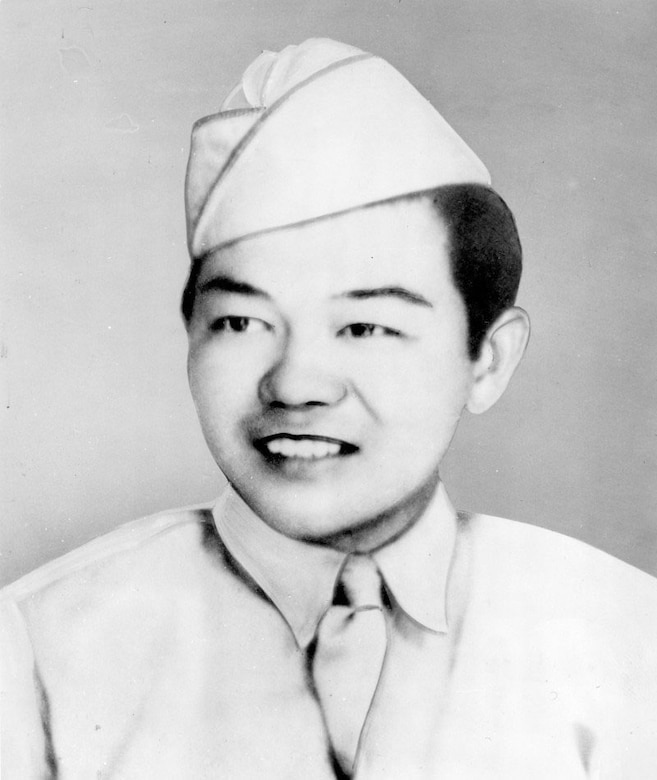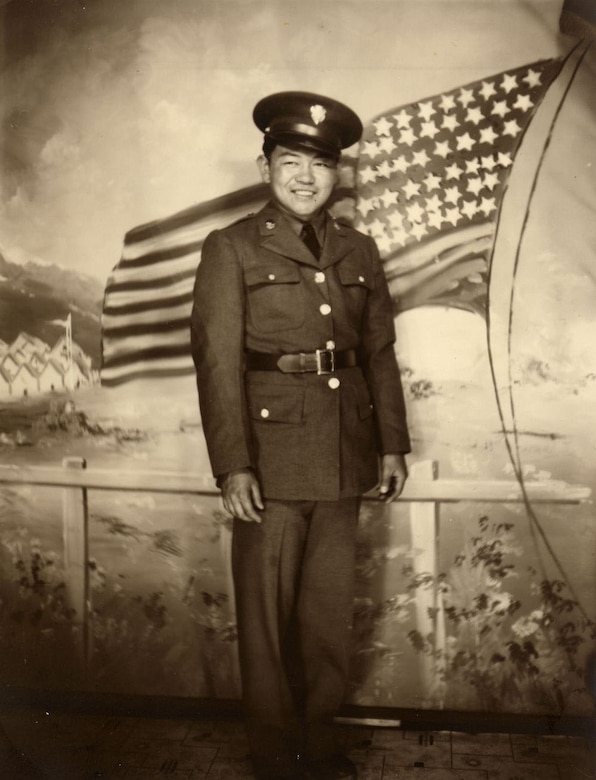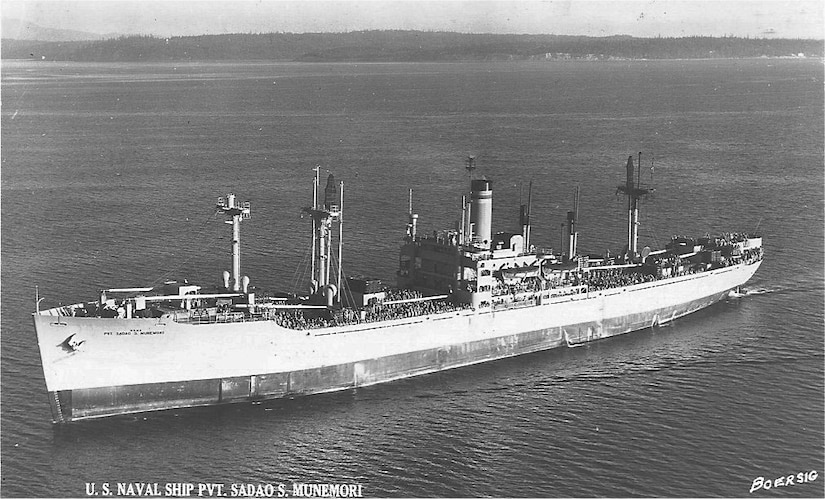During World War II, everyone who identified as American wanted to fight for the U.S. — including Japanese-Americans, who were initially denied entry into the military due to wartime prejudice. Eventually, they were allowed to enlist, and many fought in a unit that became one of the most decorated in history. Army Pfc. Sadao Munemori was one of them.

Munemori’s parents emigrated from Hiroshima, Japan, in the early 1900s. Born Aug. 17, 1922, Munemori was the fourth of five children who grew up in the Glendale area of Los Angeles county; his family called him “Spud” because he preferred potatoes to rice.
Munemori faced some tough realities early in life. As a teen, he tried to go to a public swimming pool with a friend, but he was turned away because he was Japanese. Then, his father died when he was 16.
After graduating from high school in 1940, Munemori worked as a mechanic until enlisting in the Army in November 1941 — one month before the Japanese attacked Pearl Harbor. After the attack, the anti-Asian sentiment that had been brewing finally erupted. Three months after Munemori enlisted, his family was relocated to an inland internment camp — along with about 120,000 other West Coast Japanese-Americans.

When the U.S. joined the war, Japanese-Americans — called Nisei — were barred from military service due to fears about their allegiance. Since 19-year-old Munemori had already been accepted, he was chosen for the Military Intelligence Service Language School in Minnesota.
In 1942, the Army created the 100th Infantry Battalion and the 442nd Regimental Combat Team, which were segregated units for Nisei who wanted to prove their allegiance to America. Meanwhile, Munemori’s oldest sister, who lived in Japan, had a husband who was drafted into the Japanese Army. For that reason, Munemori chose to transfer into the 100th to avoid fighting in the Pacific. It was a move that required him to revert in rank from technical sergeant to private, but he accepted it.
Before leaving for boot camp in May 1943, Munemori visited his family at the internment camp. It was the last time they would see him.
About a year later, the young soldier joined the 100th on the beachheads of Anzio, Italy. The battalion had been fighting in the country for about nine months already. In August 1944, as the Allies took Rome, the battalion was absorbed into the larger 442nd Regimental Combat Team.

According to the Smithsonian Asian Pacific American Center, Munemori spent the next several months fighting in the Rome-Arno Campaign and helping rescue about 200 men who were part of the “lost battalion” in France’s Vosges Mountains. Other soldiers in the 100th regarded Munemori as friendly, outgoing and accepting. They said he still wanted them to call him by his childhood nickname, Spud.
A Heroic Choice
In April 1945, the 100th had a new mission — to penetrate the Gothic Line along the sheer cliffs of the Apennine Mountains. The natural barrier was the final German defensive line in northern Italy that had kept Allied forces at bay for months.
Munemori’s unit, Company A, decided to move at night to surprise the enemy on April 5 near Seravezza, Italy. By dawn, they’d made it to the top of the mountain undetected.
Shortly after they attacked, the unit was pinned down by the enemy’s strong defenses. When their squad leader was wounded, Munemori took over. He attacked the men firing on them and single-handedly knocked out two machine guns with grenades.
The enemy fire was intense, though, so the unit began to withdraw. Munemori had almost made it to a shell crater where two of his men were hiding when a live grenade bounced off his helmet and into the ditch toward his comrades. Without hesitation, Munemori dove onto the explosive to protect the other two soldiers. It went off, killing Munemori, who was two weeks shy of his 23rd birthday.
Aside from saving lives, Munemori’s actions were vital to clearing the path for his company to liberate the Italian town of Pietrasanta. He was initially awarded a posthumous Distinguished Service Cross for his bravery, but that was upgraded to the Medal of Honor. On March 13, 1946, the medal was presented to his mother at Fort MacArthur, California, where he had begun his service. He became the first Japanese-American to earn the nation’s highest award for valor.
Sadly, Munemori’s family had to hold an initial memorial service for him at their internment camp. However, on Dec. 15, 1948, burial rights were held at the Nishi Hongwanji Buddhist Temple in Los Angeles. The ceremony doubled as a tribute to the sacrifices of all Nisei soldiers who fought with the 442nd.
The 442nd Regimental Combat Team became one of the most decorated units in U.S. military history, but Munemori was the first Japanese-American to earn the Medal of Honor. An investigation later revealed there was prejudice in the selection process, so 20 Nisei soldiers received upgrades to the Medal of Honor in 2000 to rectify the injustice. For those who were no longer living, their families received it in their honor.
Munemori and three other Japanese-Americans who later received Medals of Honor were buried at LA’s Evergreen Cemetery, where a monument stands in Munemori’s honor. Years later, the people of Pietrasanta erected another statue of Munemori as a symbol of gratitude to the 100th Infantry Battalion, which liberated their town.
Many of Munemori’s Nisei battle buddies grew up in Hawaii. As his family aged, they chose to entrust his medal to the U.S. Army Museum of Hawaii at Fort Derussy on Oahu. They thought it was a fitting choice since Munemori’s surviving friends were there, and it was a place he had always wanted to visit.

In his memory, the troop ship Wilson Victory, which brought the 100th/422nd back from the war, was renamed USNS Private Sadao S. Munemori in 1947.
According to Munemori’s older sister, Yaeko Yokoyama, her brother had a premonition about the honor when he was 8. Yokoyama said as she and her brother were arguing, he said, “Just you wait. When I grow up, they’re going to name a ship after me.”
Yokoyama was invited to be the first to board the USNS Munemori when it sailed into Honolulu.
